Recently, many teams have opted for the short corner and increased its importance to face the good teams at defending systems in corners. In our previous article of this series, different tactics used by the attacking teams at corners were explained, which are exploiting the numerical and dynamic superiority, direct passes to the rebound zone, gaps in reorganising as a line, mismatch and orientation problems on the far post.
First and foremost, do not expect me to tell you this is the best and most effective solution to face short corners to end the matter! Because things do not go like this in football in general, as when you have a successful idea, the opponents try to think of a counter, and so things go on forever.
At the short corner, in particular, the matter resembles a chess game. The defending team has only 10 players and a goalkeeper to defend a large area and cannot achieve superiority inside and outside the box together, so we will explain the best systems for defending against the short corner, knowing how and when they choose confrontation to direct the play outside the danger zones according to the priority of each team. Then we will explain the counter-idea that the opponents use to face these systems.
This tactical analysis will be a set-piece analysis of defending short corners and the defensive teams’ ideas to face the attacking teams’ ideas that were explained in the previous article.
Against numerical superiority
As shown below, Liverpool defend the short corner with the green player while the yellow player, whose first responsibility is to get the first touch in crosses, especially flicks, is ready to help him after playing the short corner to prevent a 2v1 situation and the blue player is on the rebound zone, so we have three players prepared to defend this area.
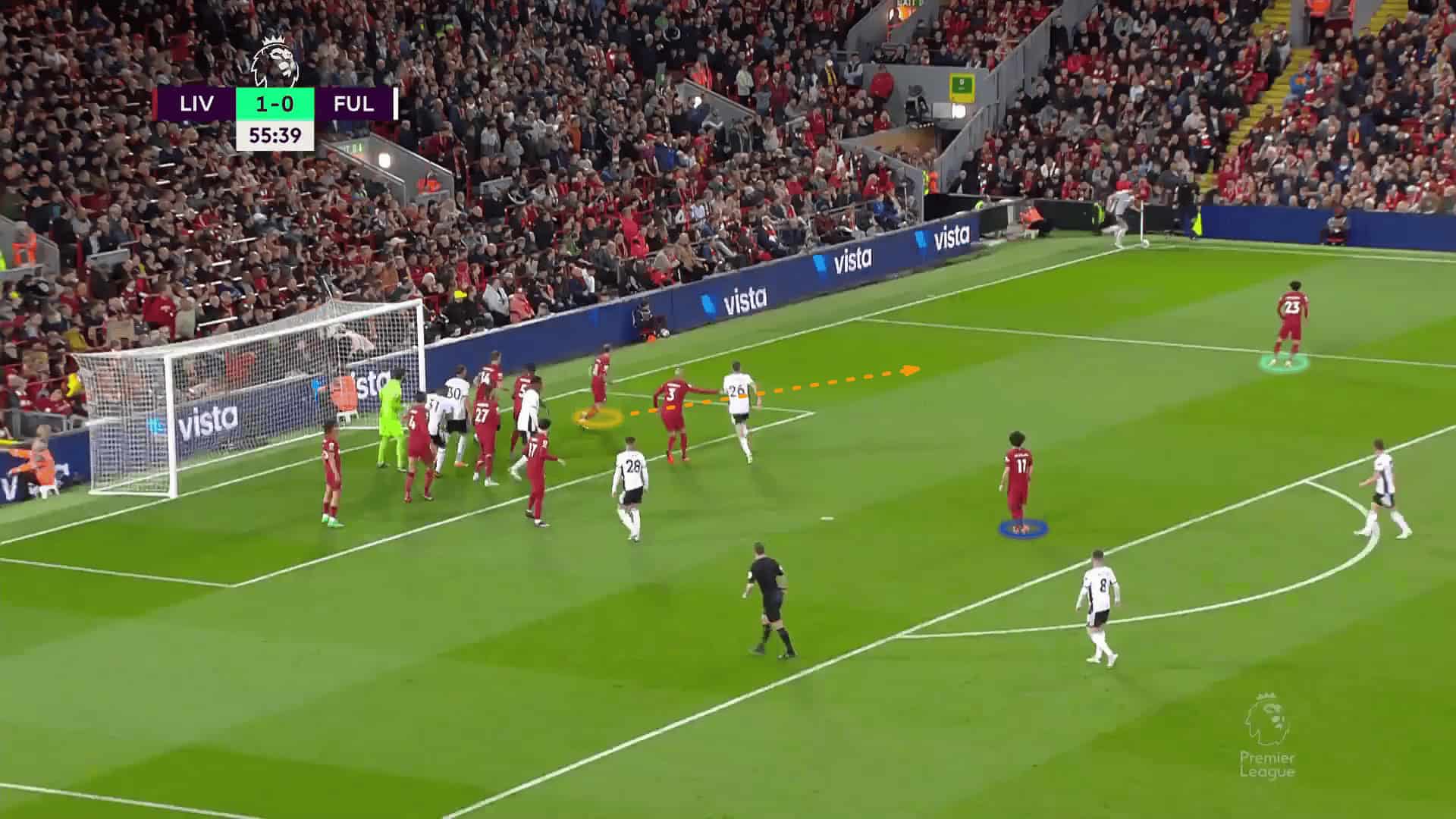
Against Man United, Liverpool faced a new challenge with four attacking players in this area. In the first photo, the four attacking players are highlighted in red using two attacking short options and a rebound player out of the shot. Liverpool, as usual, defend with a green player to defend the short option with the yellow player who comes to help and the blue player on the rebound zone, so the situation is 4v3, but they have a plan which is making the rebound player, in blue, defend against the second short option while the near post player, in black, goes to defend the rebound zone.
In the second photo, the rebound defender, in blue, faces the second short option, which gives the near post player in black time to meet the rebound-attacker, which forces him to pass the ball to the back, as shown in the third and fourth photos.
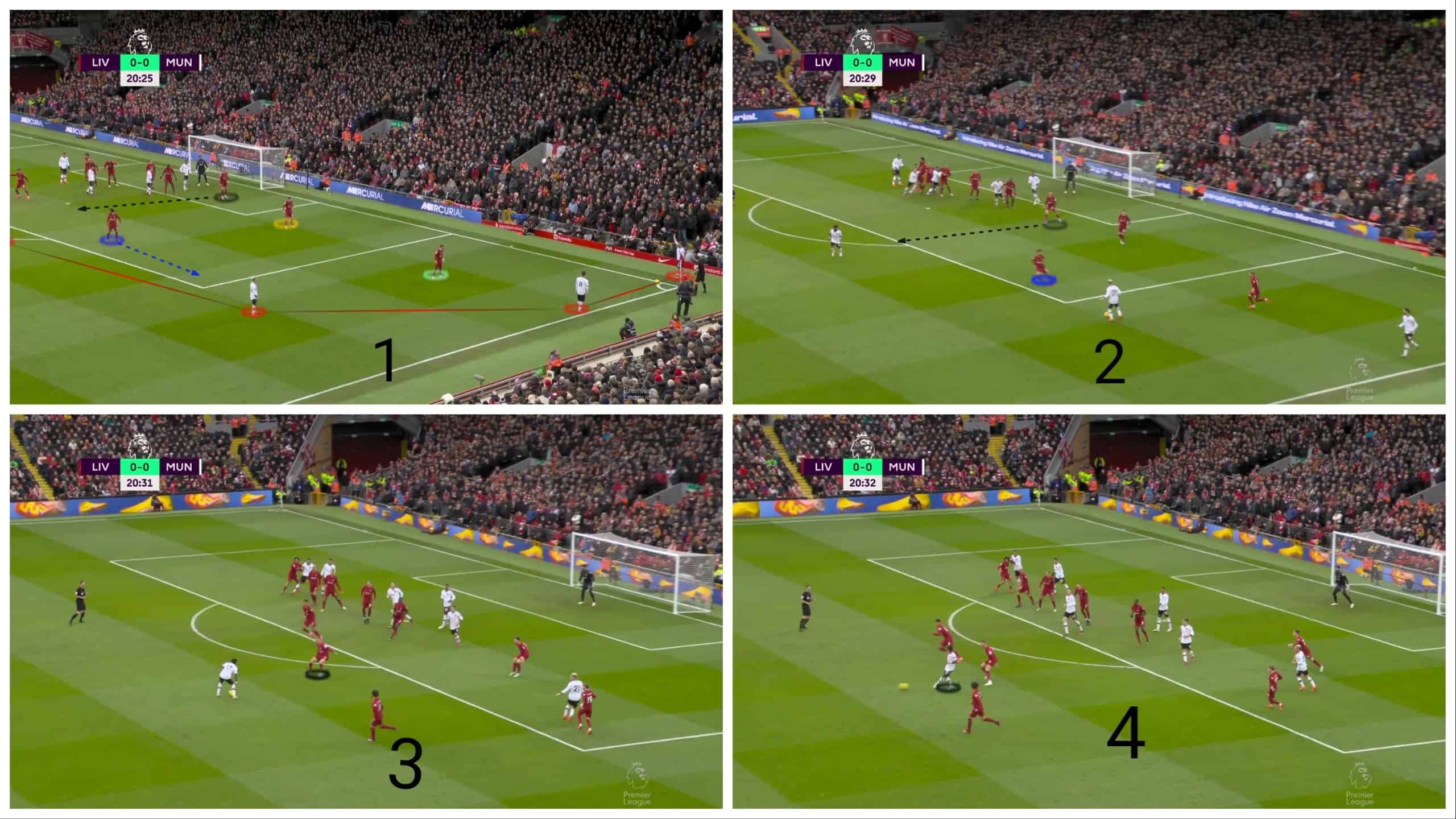
Here, we see a system from a different team, Tottenham. In the first photo, they defend like Liverpool with five green players in the first zone line, a yellow player who defends this area in front of the near post, especially flicks, three blue players in the second zone line, a player in black to defend the short option and a player for the rebound, out of the shot, so they are ready too for 3v3 situation as shown in the second photo.
They have another idea to defend against teams who prefer to overload the short area with more than three players. In the third photo, they prefer not to wait, so they start by using two red players for the short option and a player in black for the rebound; thus, they have the same four first players in the first zone line but with no one standing in front of them depending only on one, in blue, of the three second-zone defenders, in yellow, to move slightly to help on the near post. Here, the near post defender, number 1, is the one who should go to help the three short defenders against a 4v3 situation.
In the fourth photo, a player comes from the back to support the three attackers, but the near post defender, number 1, covers the three defenders in a 4v4 situation.
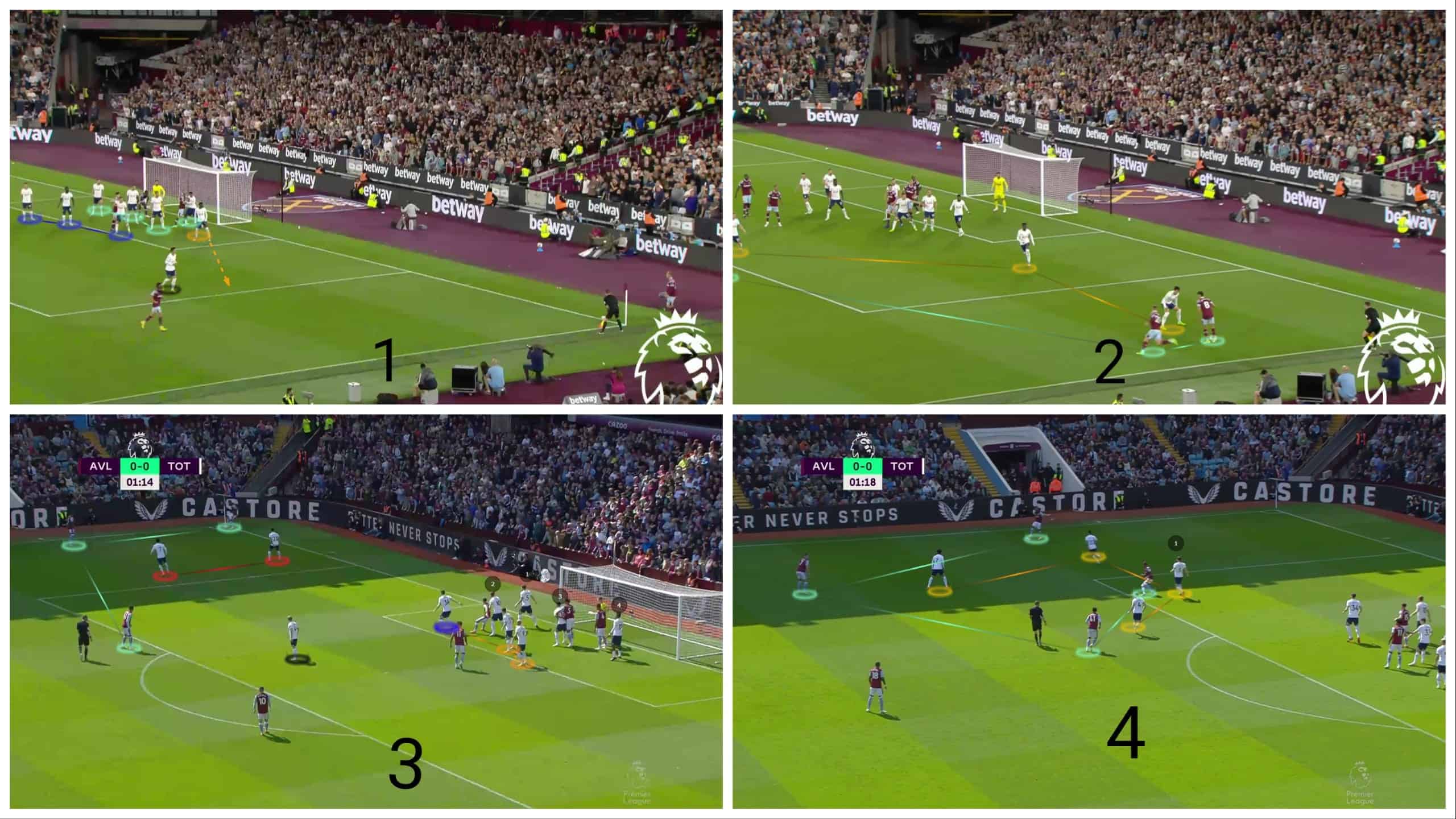
As we know, teams always try to find a counter-idea, so we will show how teams try to find weaknesses in these two systems.
As shown below, Aston Villa’s idea is to target the area in front of the near post, in black, because of the absence of its defender for a second short defender. They simply use three green blocks for players number one, two and three — then the yellow player moves from the blind side as the taker moves to flick the ball. Richarlison, in red, goes up to defend the second rebound attacker thinking that the corner would be played directly there so the attacker in black is free to receive the flick.
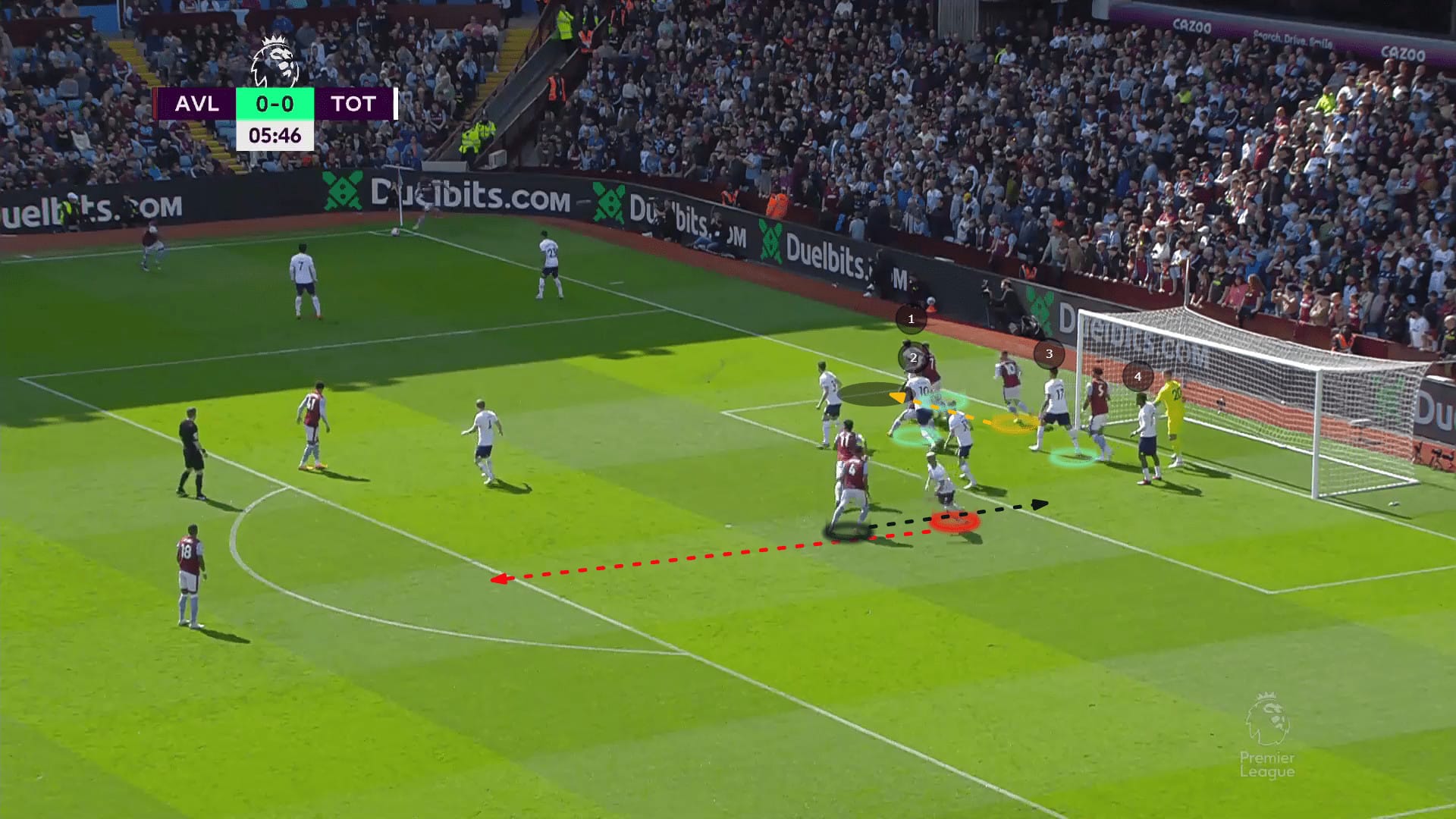
The plan works, but the cross is a little short, so the green player decides to play it by his leg, and then the ball comes behind the attacker in black.
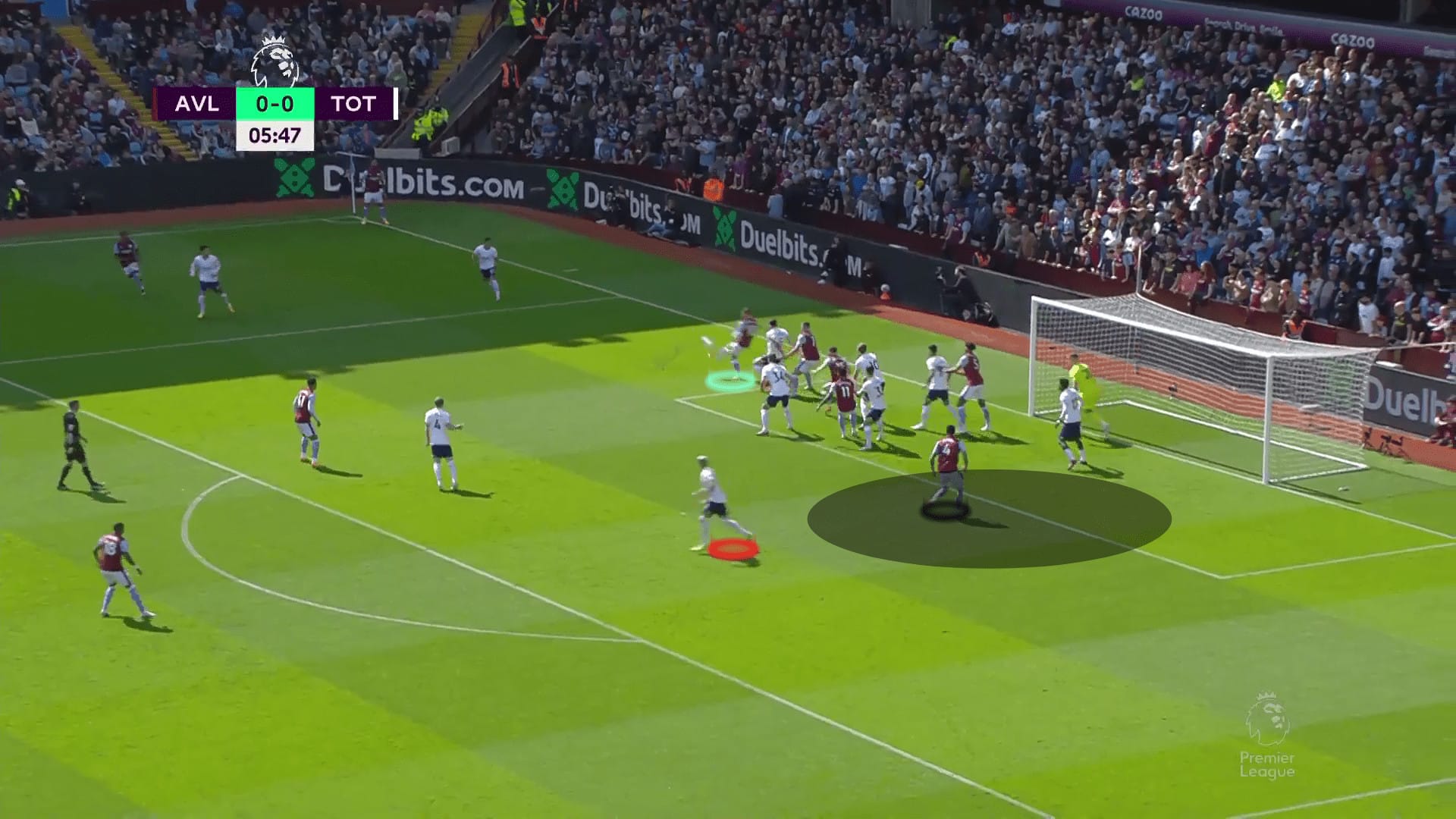
Liverpool also face a 5v4 situation against Real Madrid, who attack with two short options; Dani Carvajal comes from the back in green, while Luka Modrić fixes the rebound defender in yellow.
Liverpool defend, as usual, with four defenders, the rebound yellow player, the short defender with the one who helps him and the near post defender who comes if needed, as explained above. Hence, the situation is 5v4, so Toni Kroos plays the cross quickly. Still, in Liverpool’s opinion, we should note that this is the slightest danger by defending the inside and leaving Vini Jr. in an offside position. We will explain the rest of the routine in another section below.
Tottenham have a solution for this matter in the third photo in which the rebound player leaves the rebound attacker to help in the short area to be 4v4 there, leaving the rebound attacker for the second zone defender. Still, as shown in the fourth photo, he has the time to defend this area.
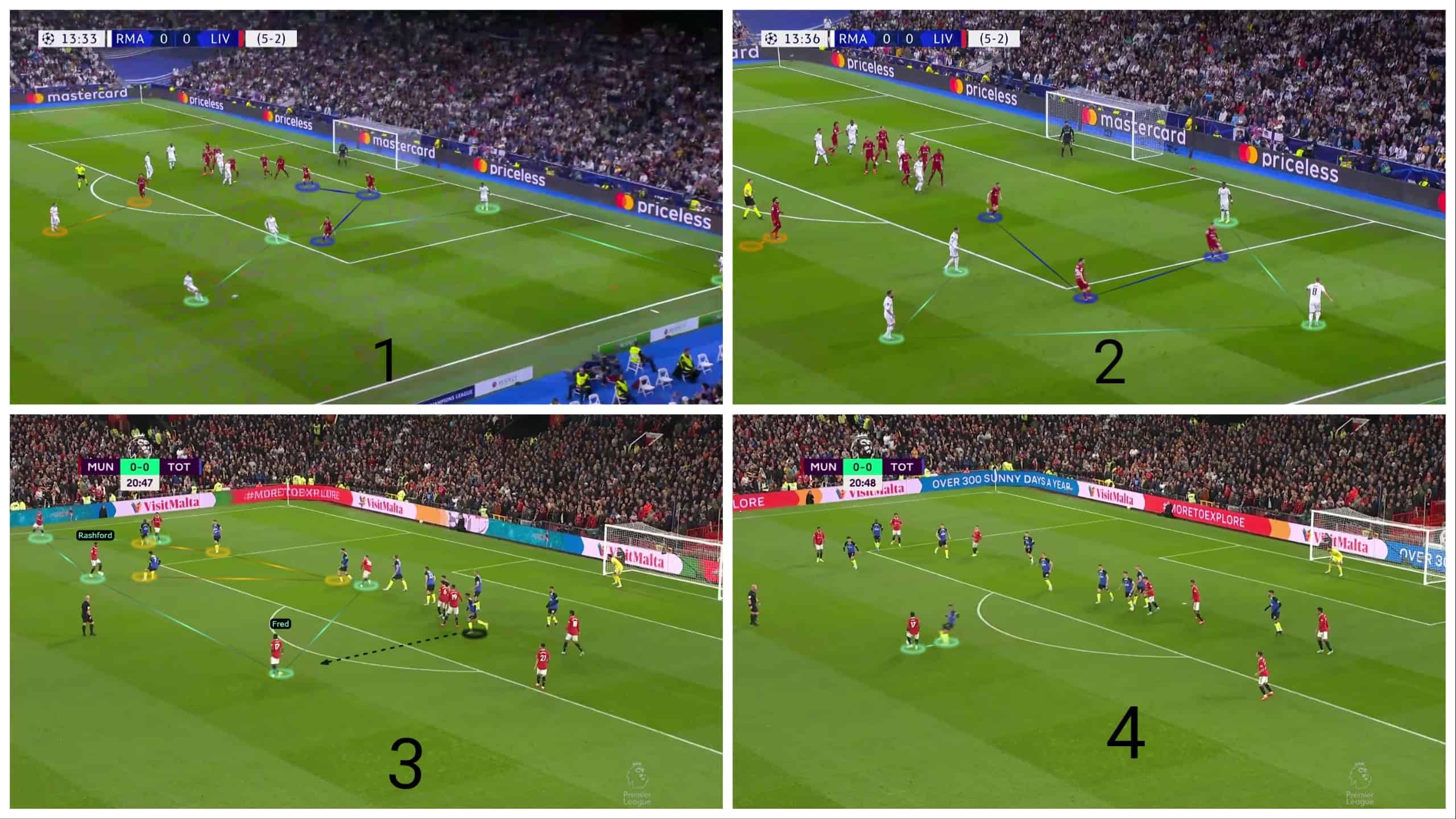
Against dynamic superiority
Liverpool’s idea is very good to face this problem by using the short-option defender to face the short-option attacker. In contrast, the green defender comes vertically behind him to follow the taker, as shown in the first photo, so if the taker decides to overlap or still in the flank, the green defender will be in a position to go in any direction of them, as shown in the second photo. In the third photo, the taker decides to get inside, and he finds the green defender, so the blue attacker is forced to play the cross, then it hits the defender, as shown in the fourth photo.
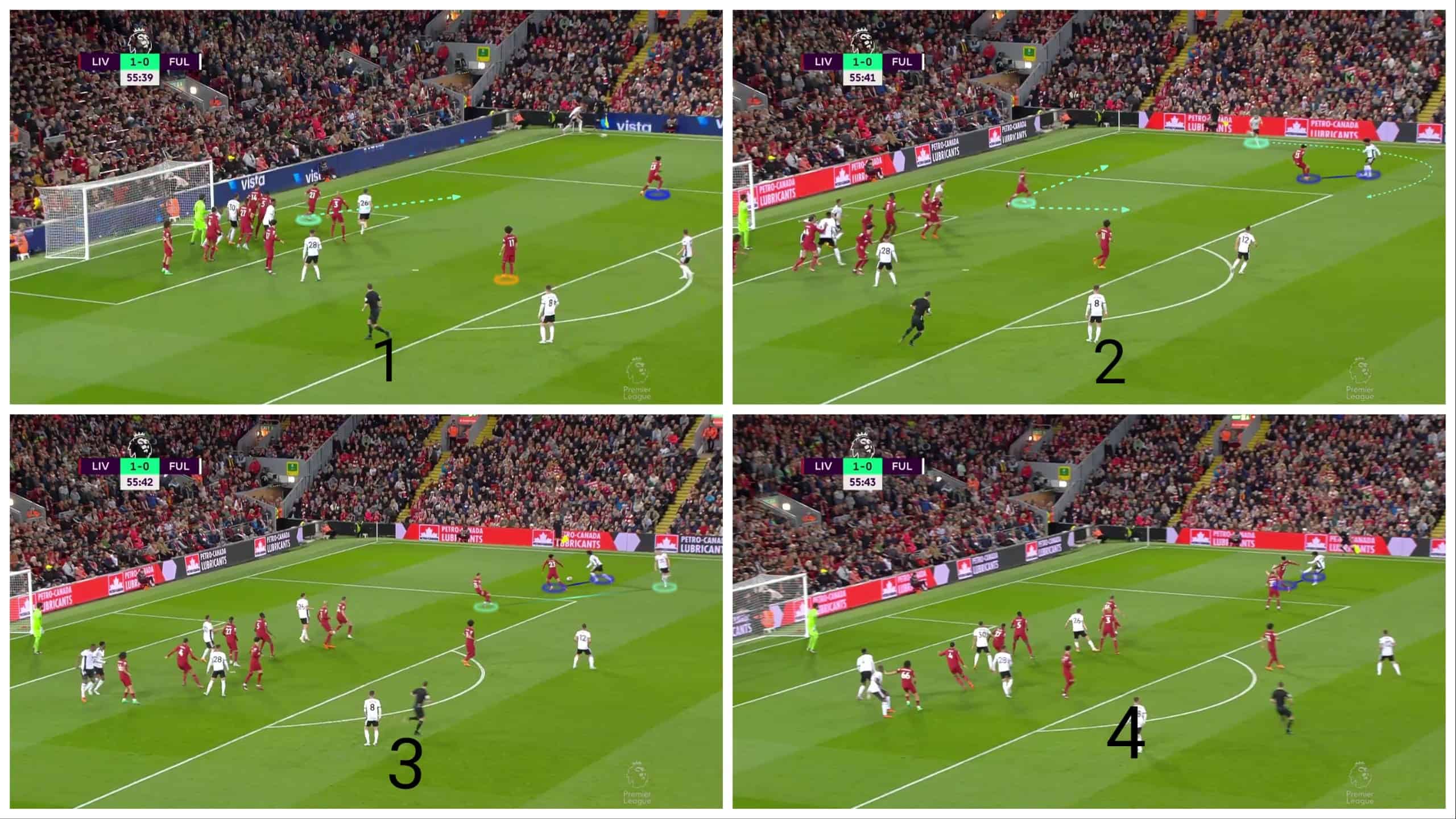
The opponents find a weak point in this system by using a very close short option or passing quickly, so the green defender is forced to run all of this distance to track the attacker.
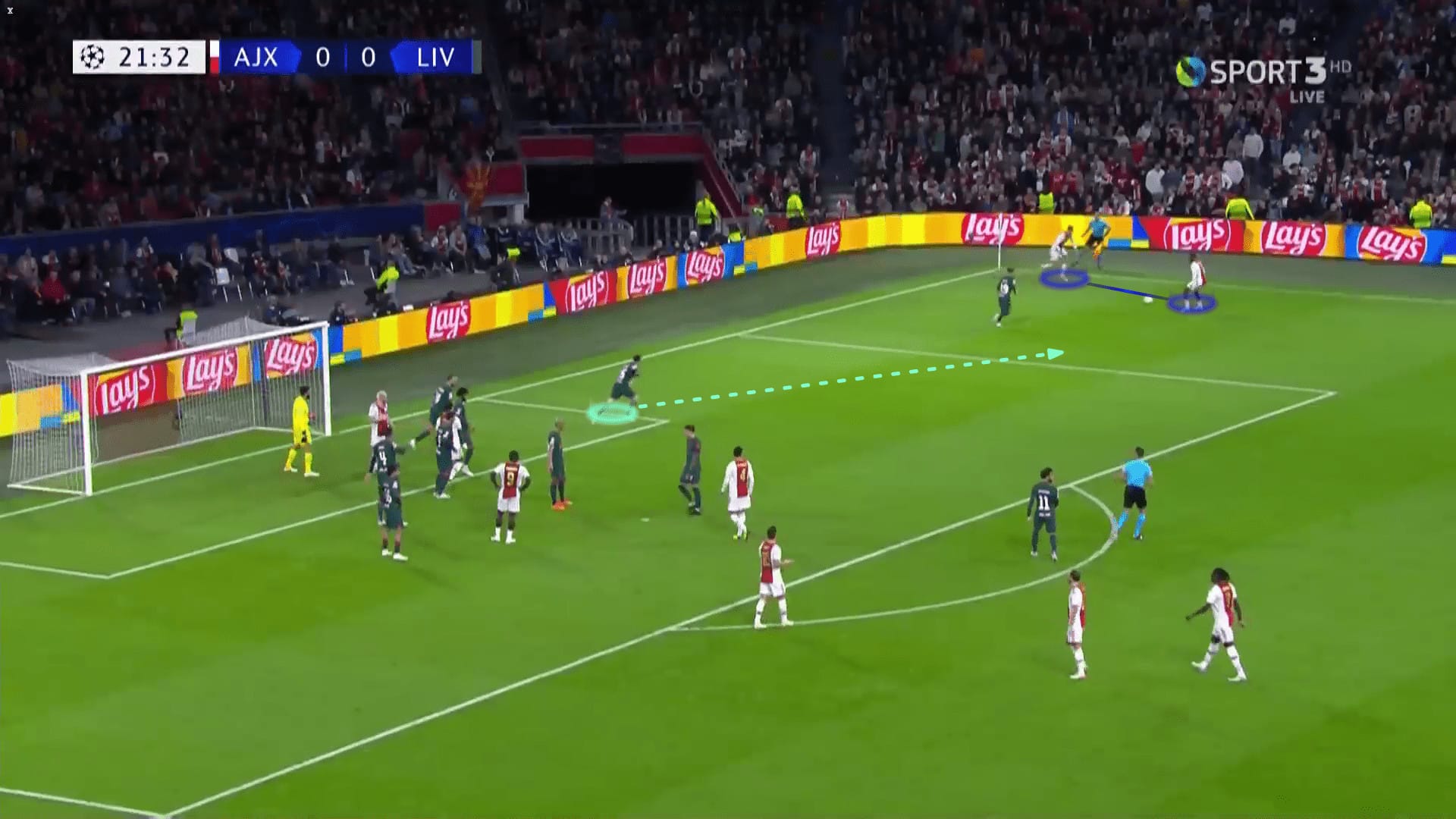
The ble defender reaches late, so the attacker did the overlap and quickly has the time to play the cross from a dangerous area.
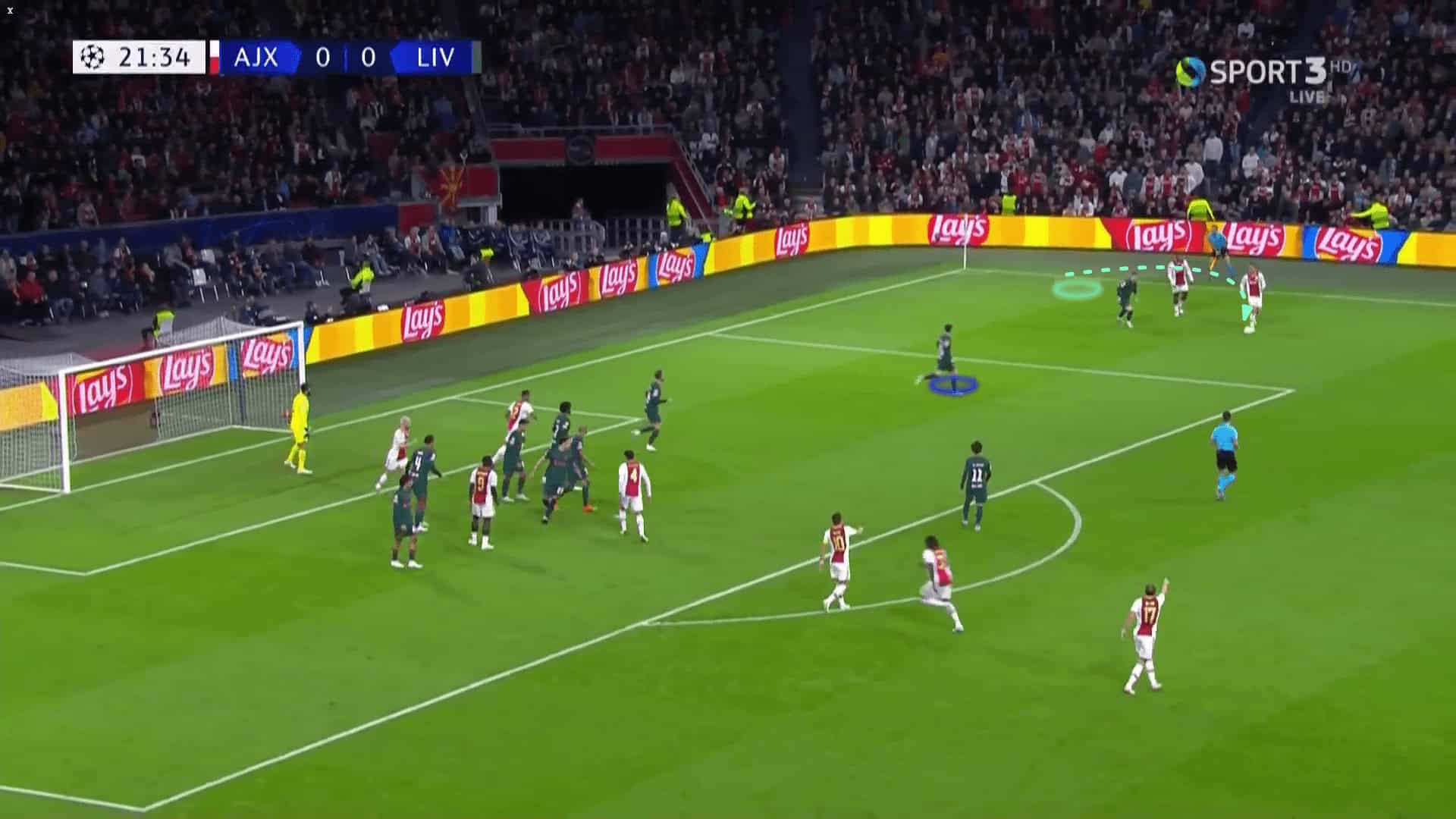
Against the direct pass to a rebound-player
Defending teams try to face the problem of facing two rebound attackers, in green, against one rebound defender, in yellow, by making him stand between them to prevent the direct cross to the one behind him, then move to the one near the short area after passing the ball, as shown in the first and second photos. The counter of this defending idea is shown in the third photo by making the two rebound attackers stand wider, in green, making it too difficult for the rebound player to get to the ball quickly. It is easy for the attacker to play a dangerous cross, as shown in the third and fourth photos.
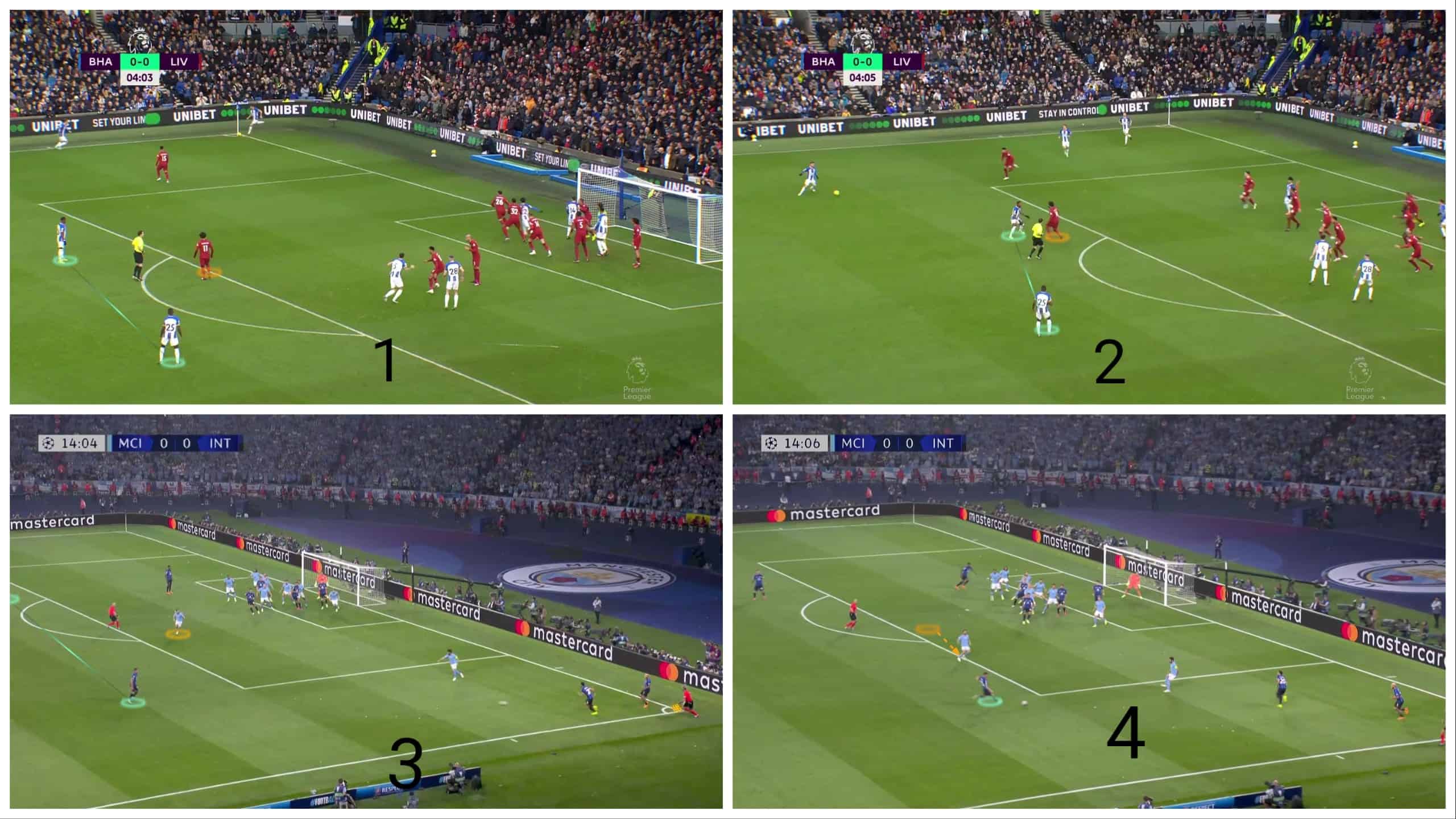
Here, Tottenham have the solution to this problem by making the rebounding defender, in yellow, start next to the first rebound attacker leaving the one behind him to the second zone defender in black who has the time while the ball is on the air, as shown in the first and second photo.
They face an attacking counter idea as usual by making the two rebound attackers stand more vertically. One goes to drag the rebound defender, then leaves the ball to the second, who moves in the same direction to be away from the second zone defender who comes to press him. They also use three attackers in front of the three-second zone defenders, especially one player with the farthest second zone defender, to attract his attention, as shown in the third and fourth photos.
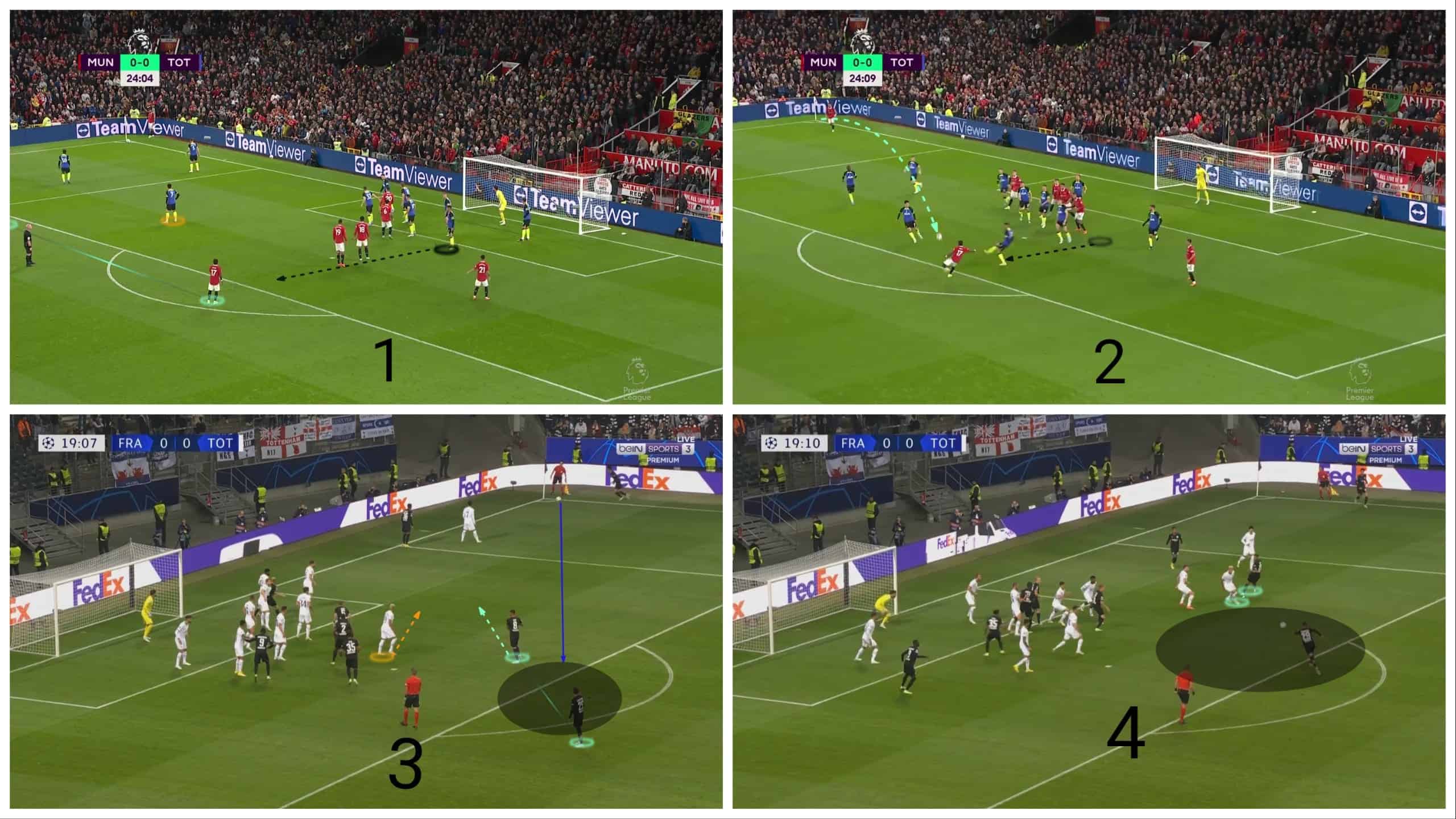
Against gaps in reorganising
In the first photo, this is a common problem, which we explained in the previous article, in reorganising. At the same time, the defender goes to defend the short corners because the player who defends the area in front of the near post goes to help, and it causes a gap on the near post, as shown in the first photo. Liverpool’s regular system is shown in the second photo, and as the yellow player goes to defend the short corner, the near post defender moves instead of him, in green, as shown in the third and fourth photo.
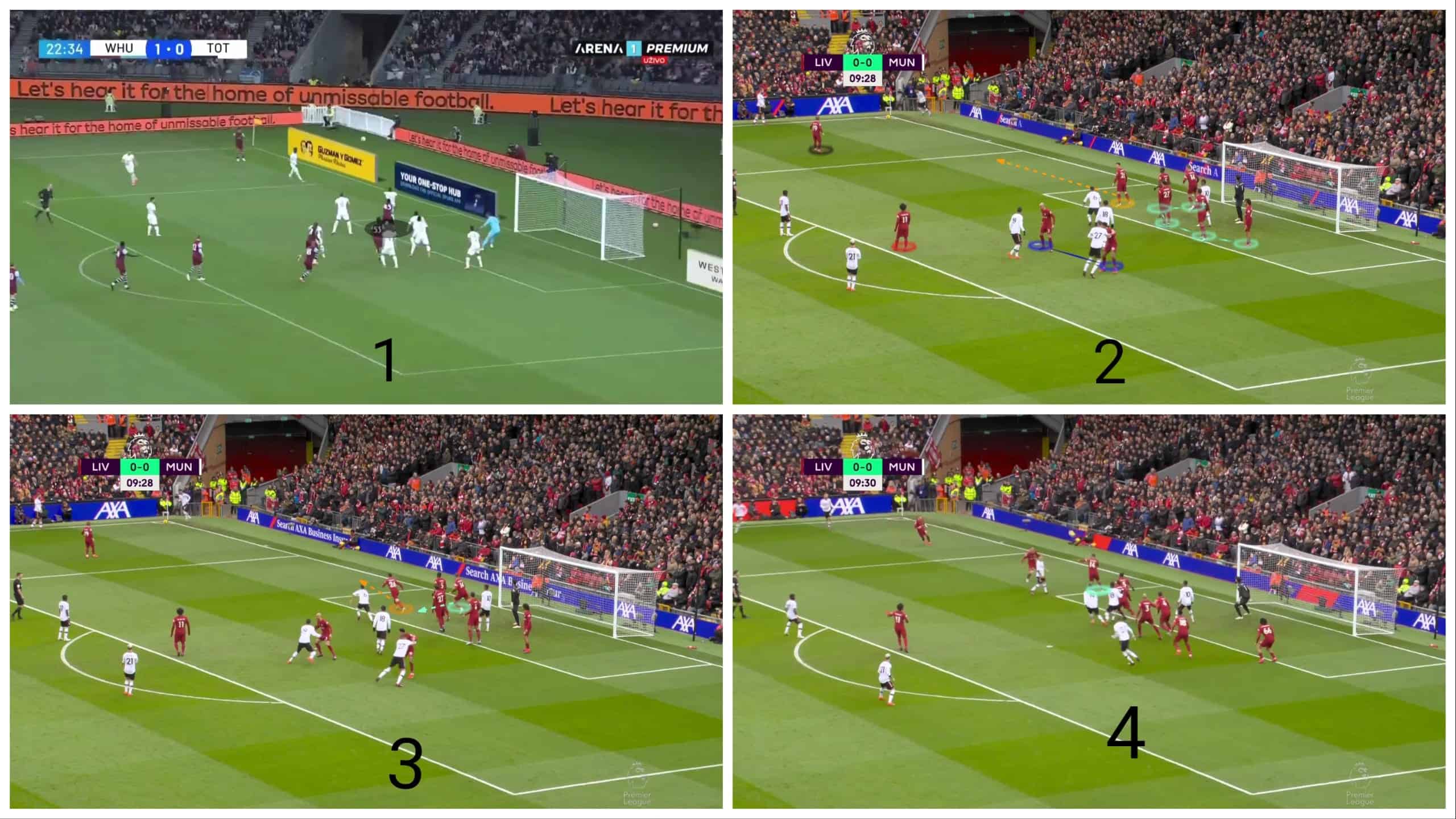
Against mismatch and orientation problems on the far post
This problem is considered the most difficult for several reasons, which are that the team, in the case of reorganising, moves up to form a line, so the far defender has to focus on his teammates to create a line and not be late from them so that the offside trap does not fail, look at the ball and monitor his opponent moving behind him in his blind side at the same time. And with all this, we cannot reduce the players on the near post and the middle of the goal because they are the most dangerous and closest places to the goal, especially since the number becomes less when several defenders go to face the short corner, as we will see.
In the first photo, we find the normal three short and rebound defenders in green, the near post defender in blue, who defends the direct shot and out-swinging crosses while being ready to be the fourth against an additional attacker covering the area behind them, four yellow players forming a first line and two players in black in the second line.
Liverpool depend on Virgil van Dijk to help Trent Alexander-Arnold on the far post, so we can see a green block for Arnold to make the yellow attacker accessible behind him, as shown in the second photo, and not only this, Fulham makes a blue attackers come in front of Van Dijk to attract his attention, as shown in the third photo, but he is brilliant at aerial duels and measuring the ball on the air, so he measures the cross, stepped back and jumped to get the ball away. At the same time, two yellow attackers wait for the headed pass, but he saves the situation, as shown in the fourth photo.
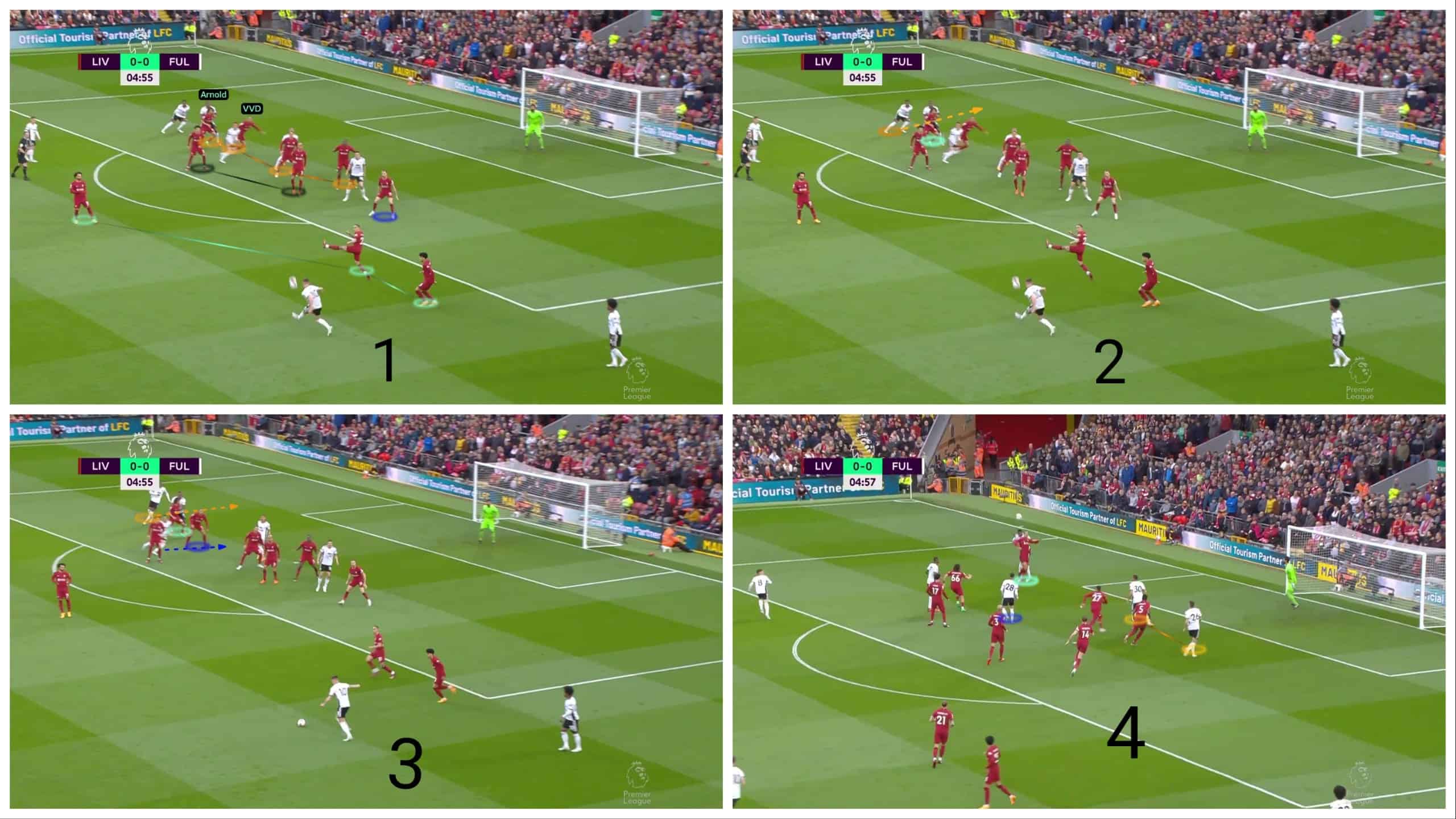
In the first solution, Real Madrid find a trick to overcome this 4-2 high line by overloading this area with three players, who are very good at aerial duels, against only two defenders making Karim Benzema in front of Van Dijk attract his attention, as shown in the second photo. In the third photo, Van Dijk is forced to wait until he is sure that the ball will be behind him, not for Benzema, then he steps back, but he doesn’t get the ball. Antonio Rüdiger nods the ball to the empty area on the near post to Vini Jr.but the ball hits the crossbar, as shown in the fourth photo.
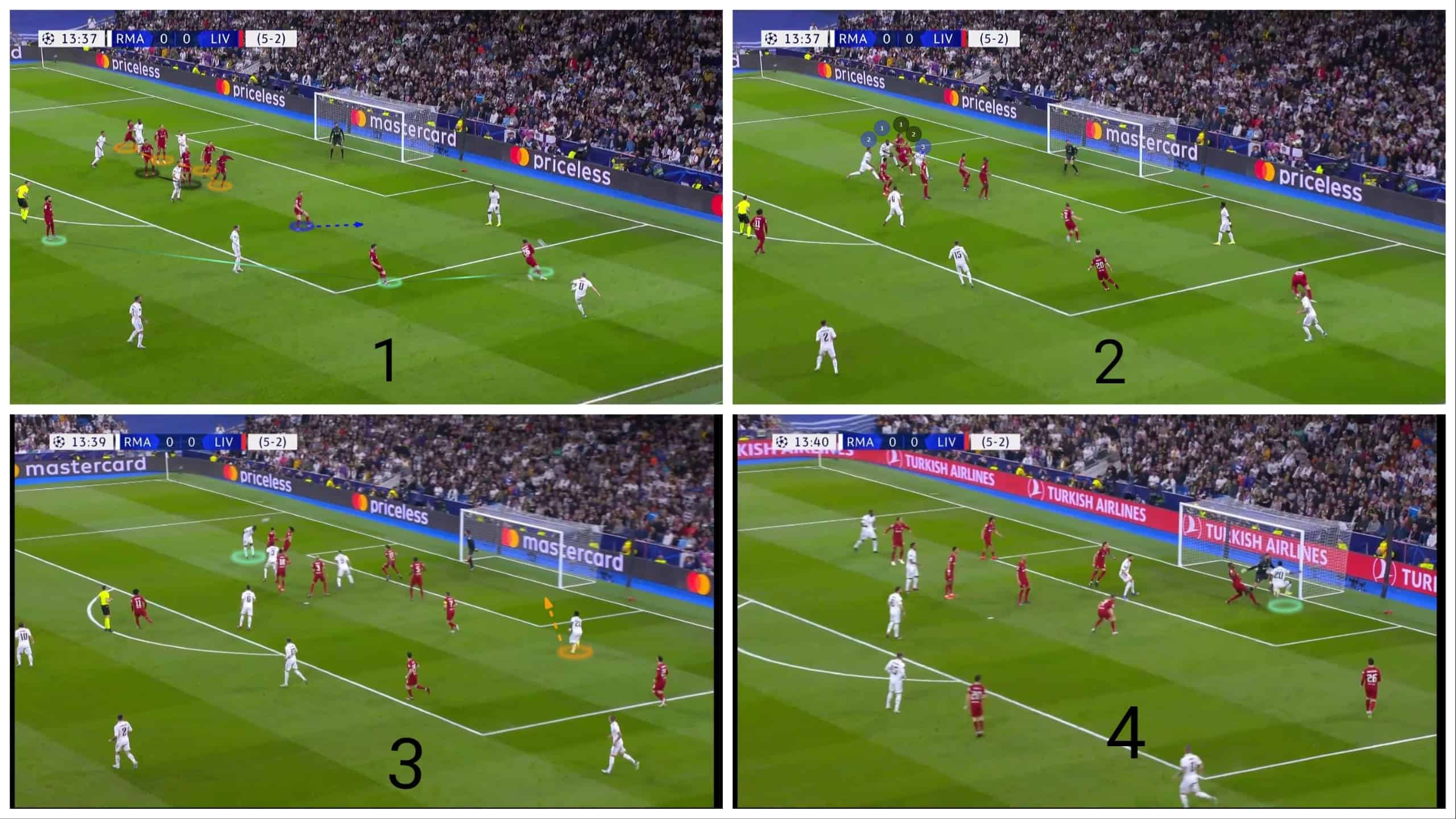
Conclusion
This analysis explained the different defensive tactics against the short corner and the counter-ideas that the attacking teams tried to implement.
We should note that defending against short corners is like any tactic in football that depends on the coach’s preferences and the extent of his vision for the priorities of the expected danger against his team. Also, we should not forget the most crucial factor, which is the team’s players’ ability that affects the tactic’s choice.

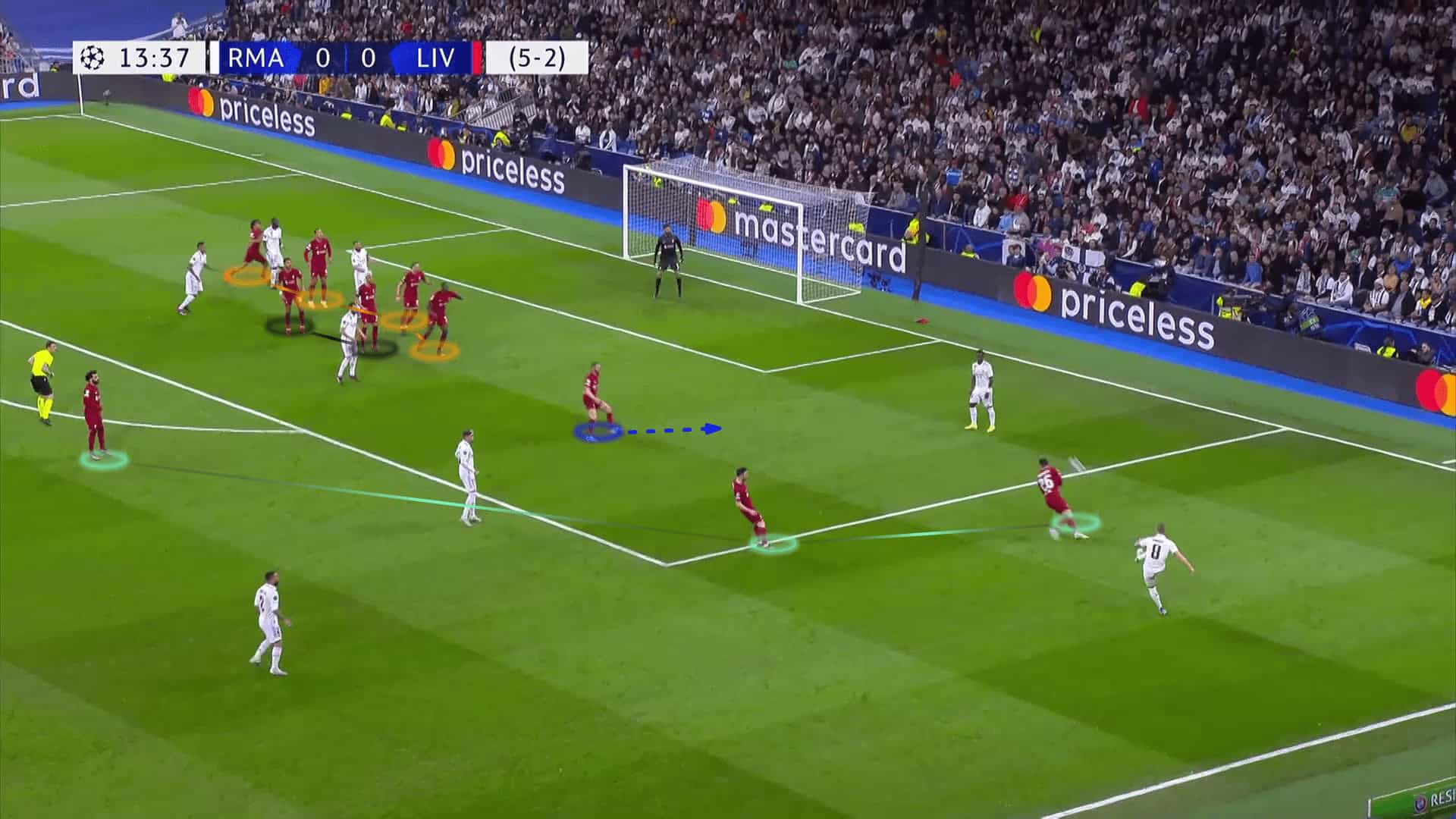

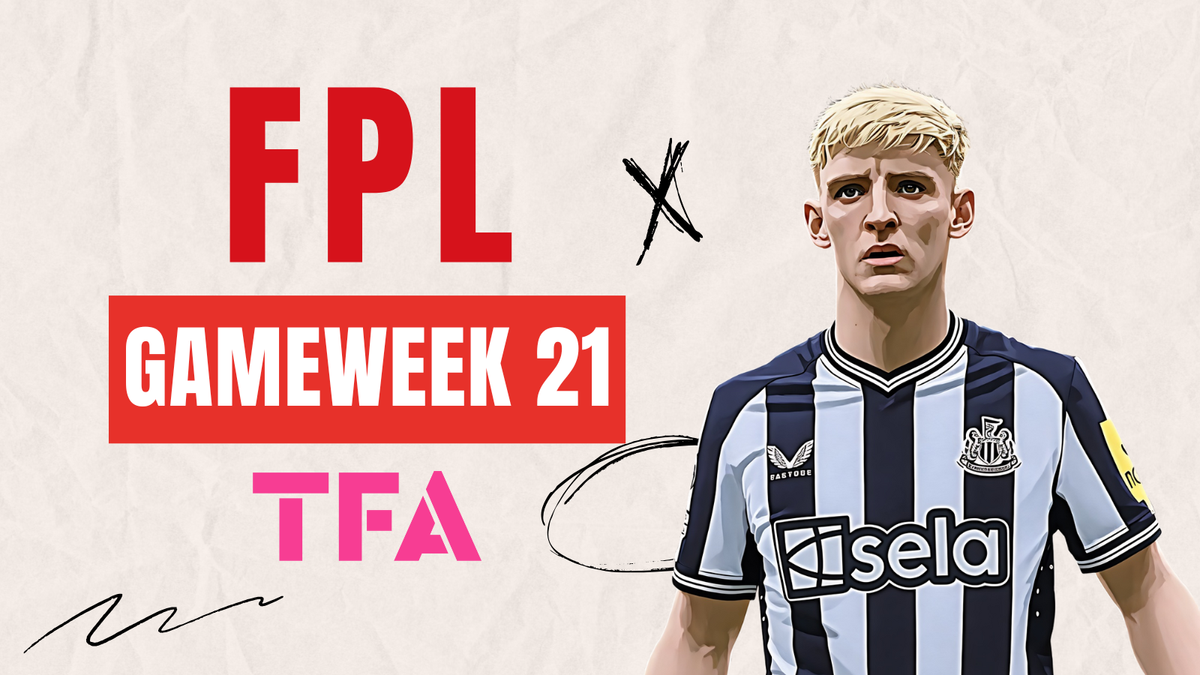

Comments